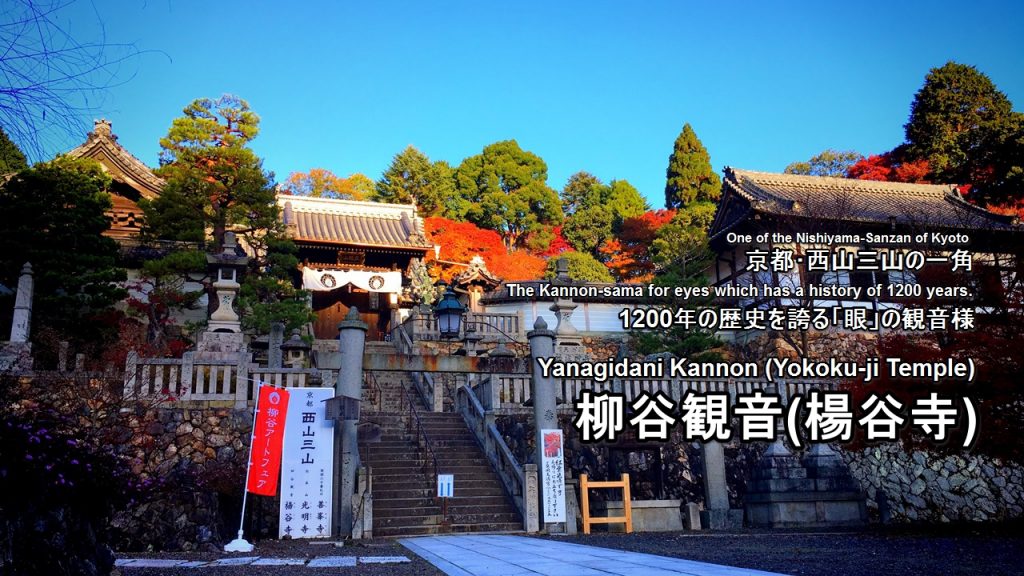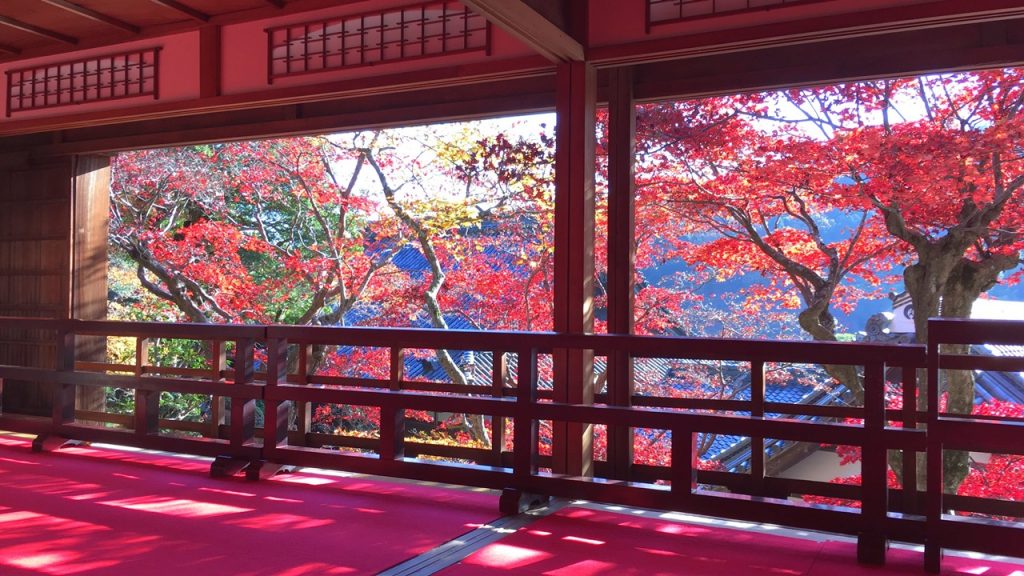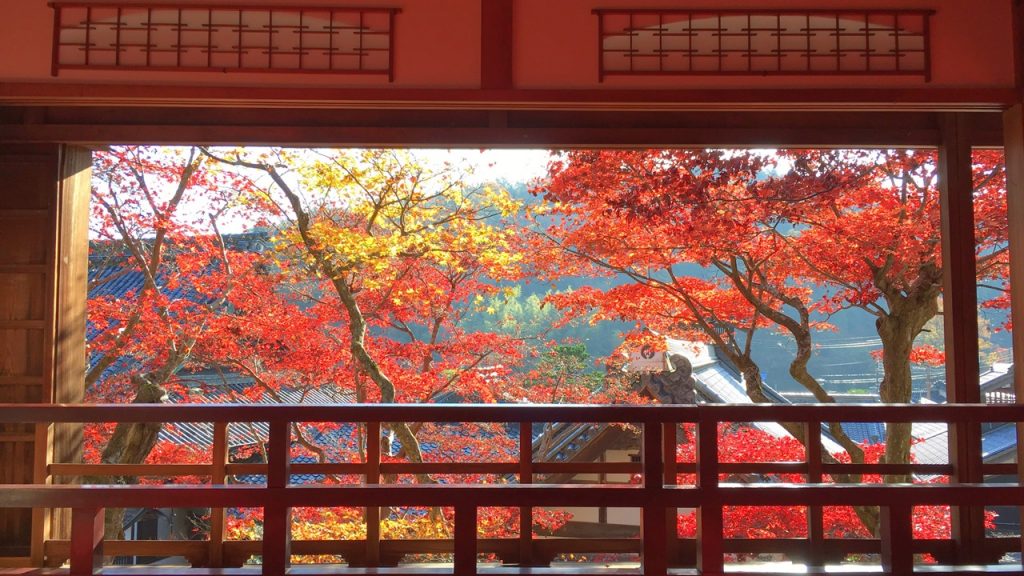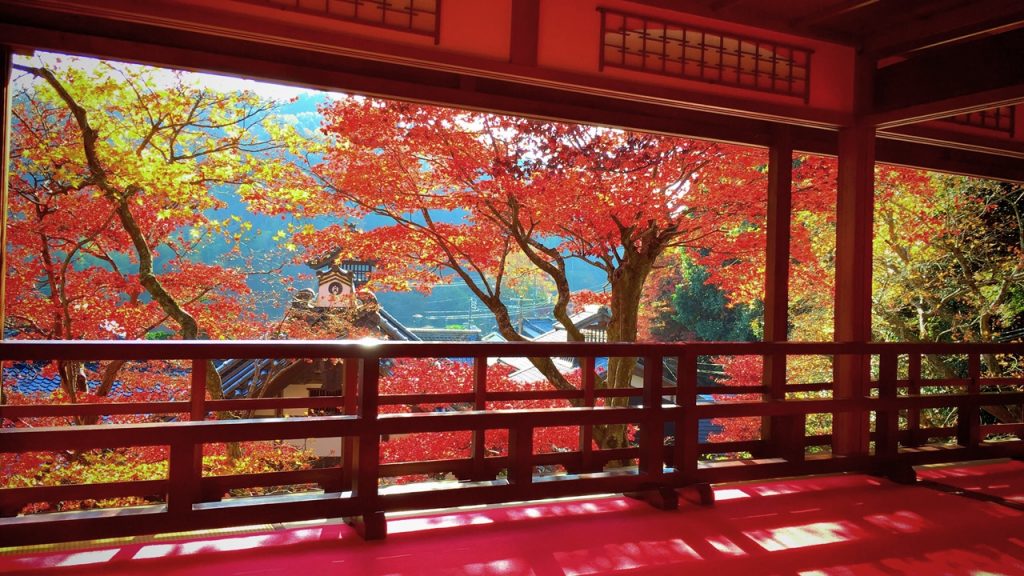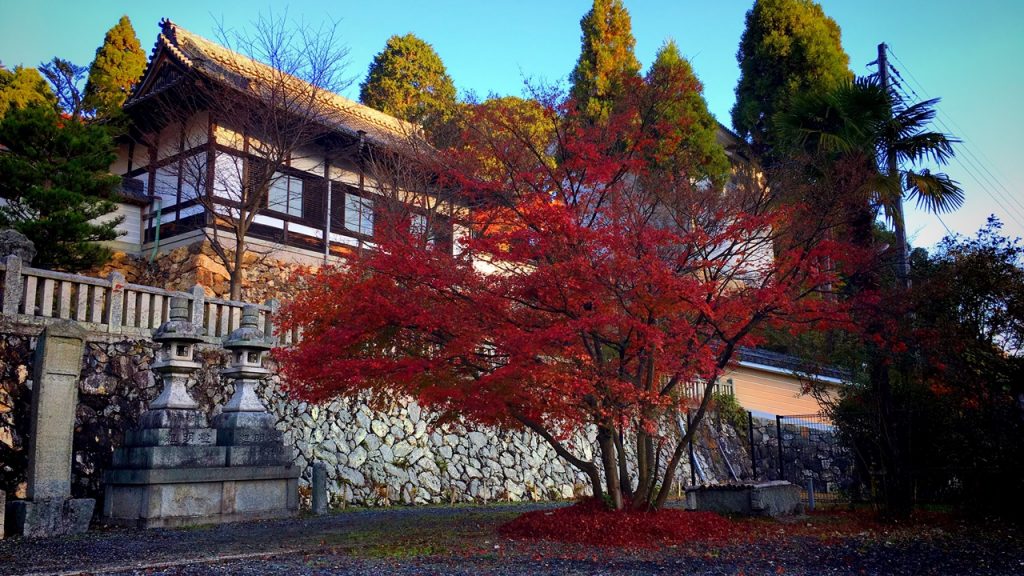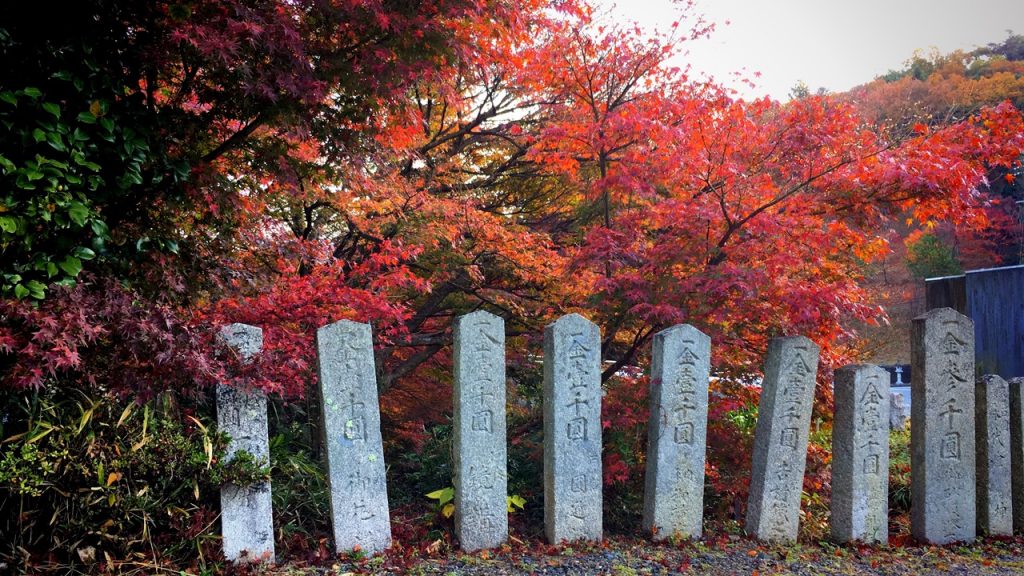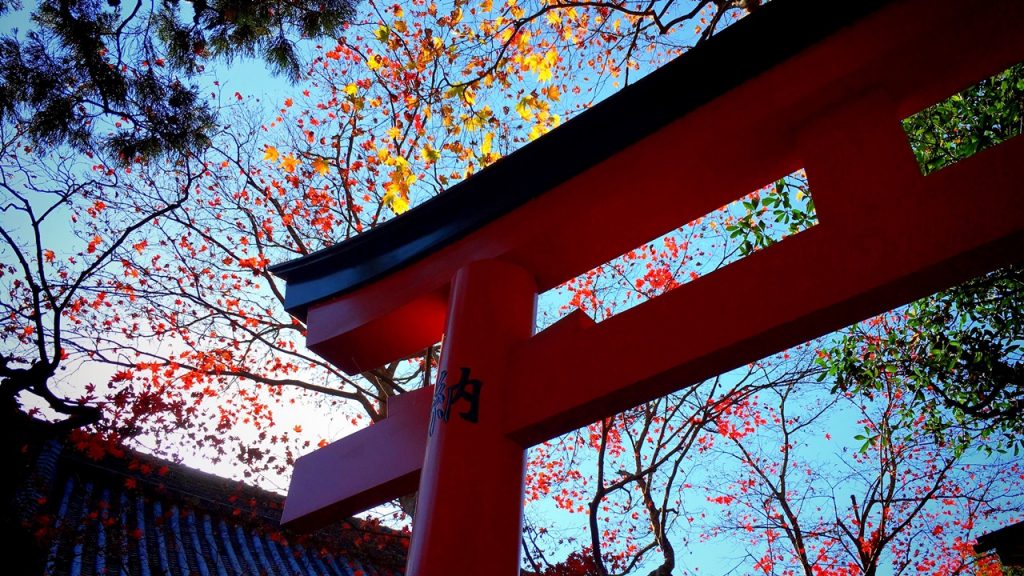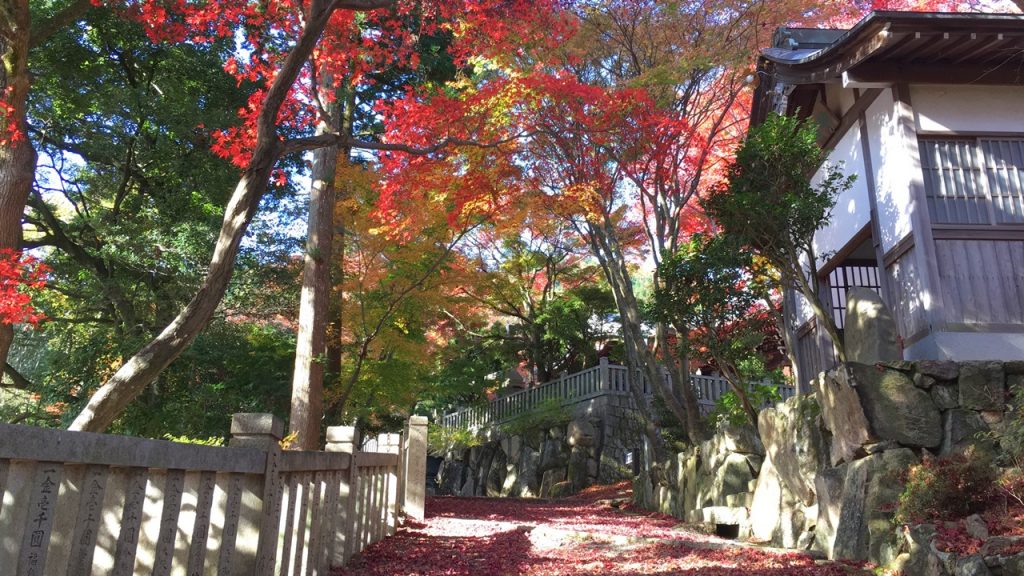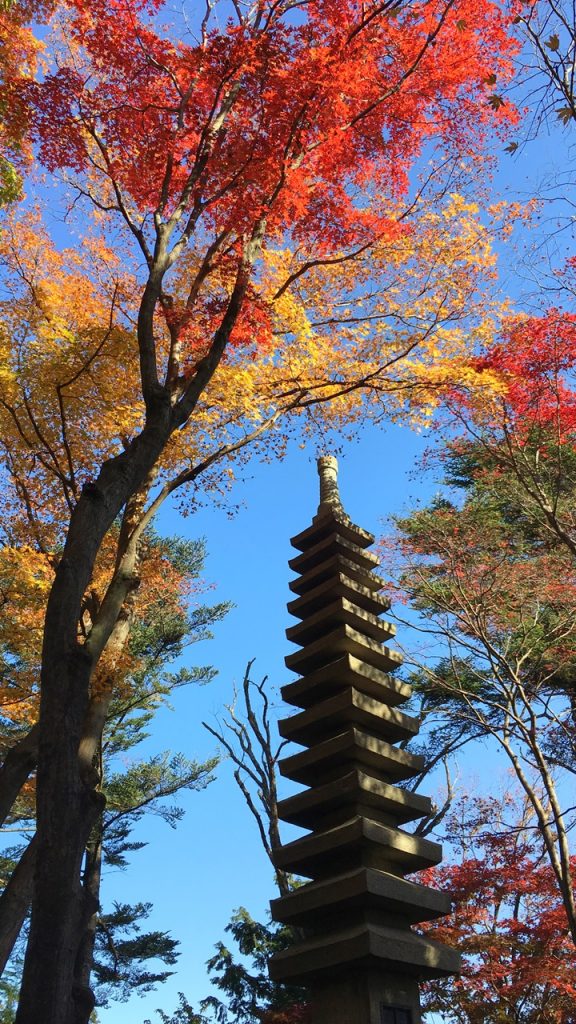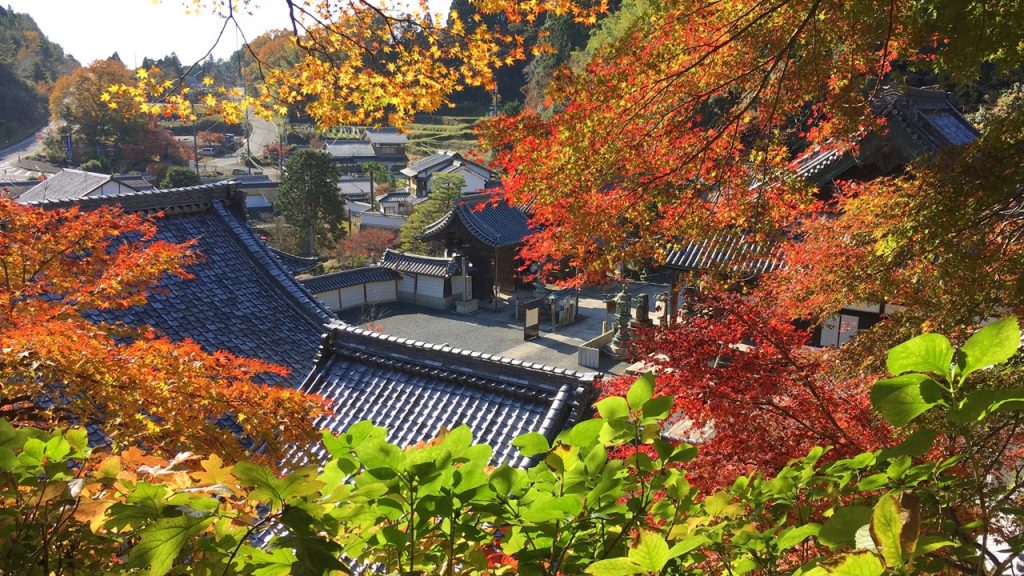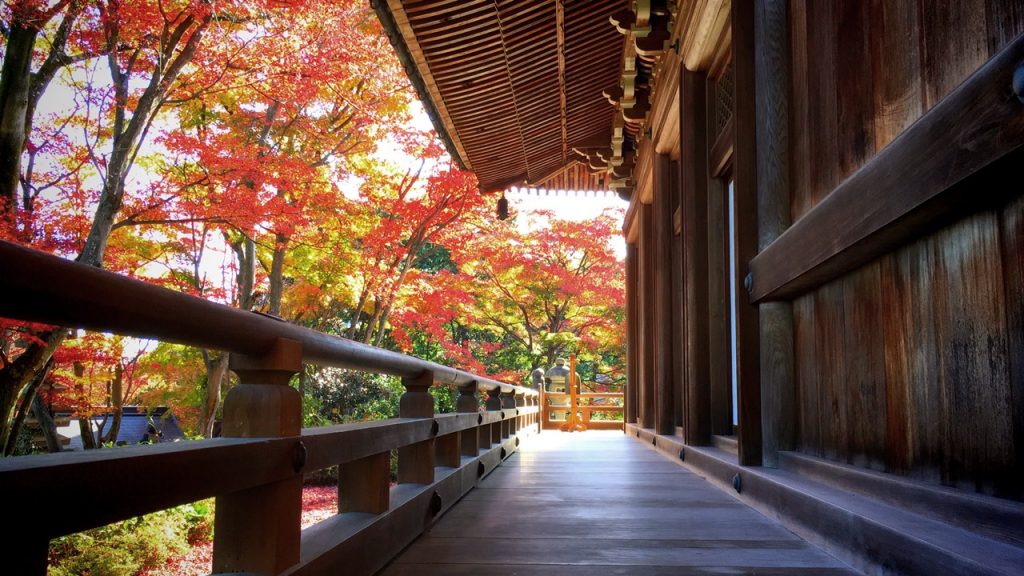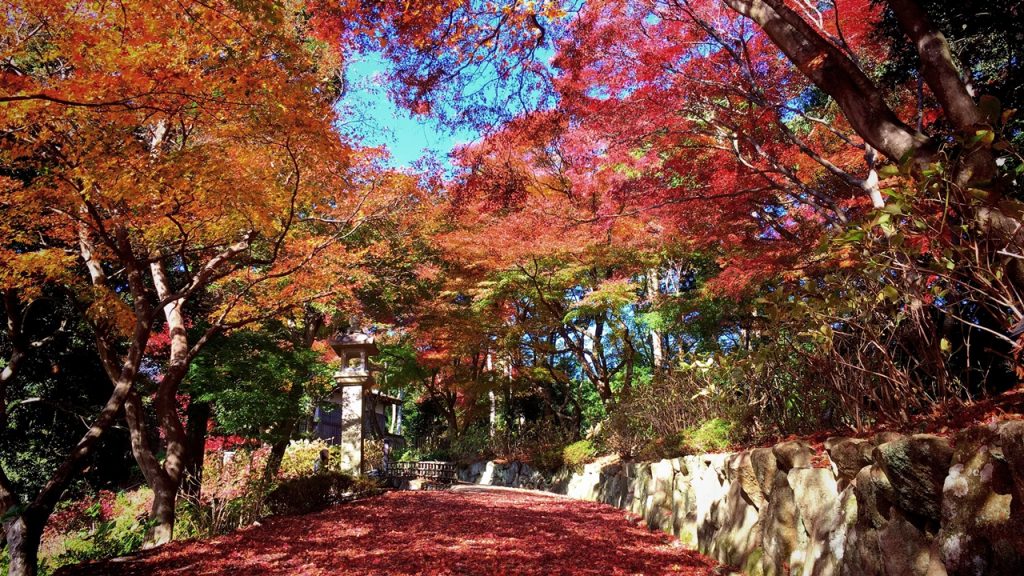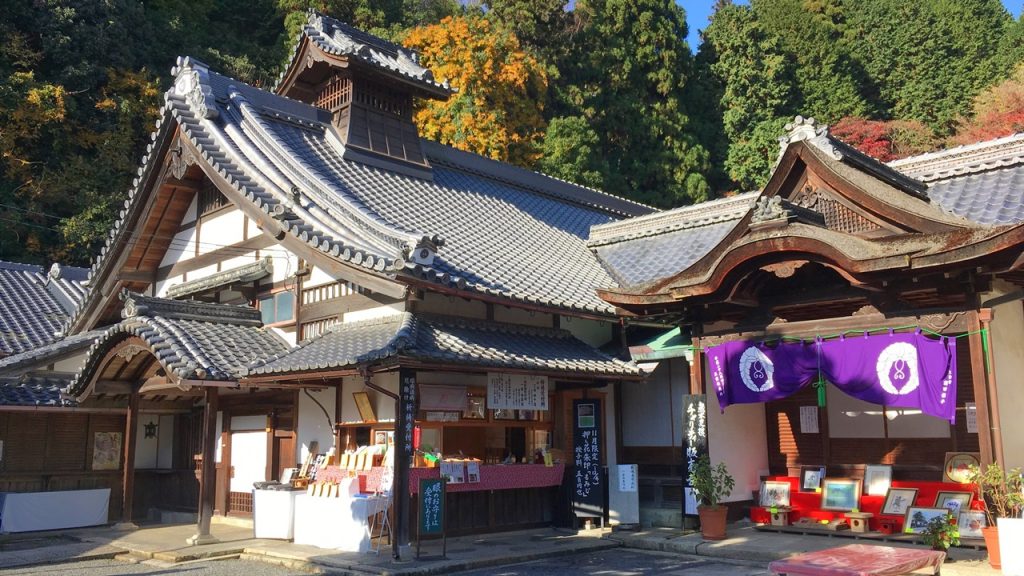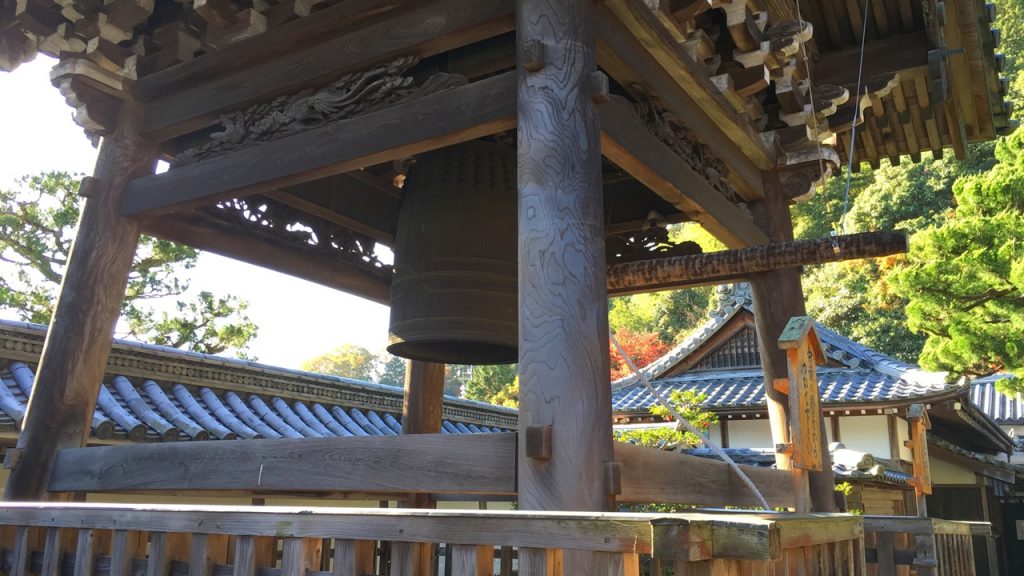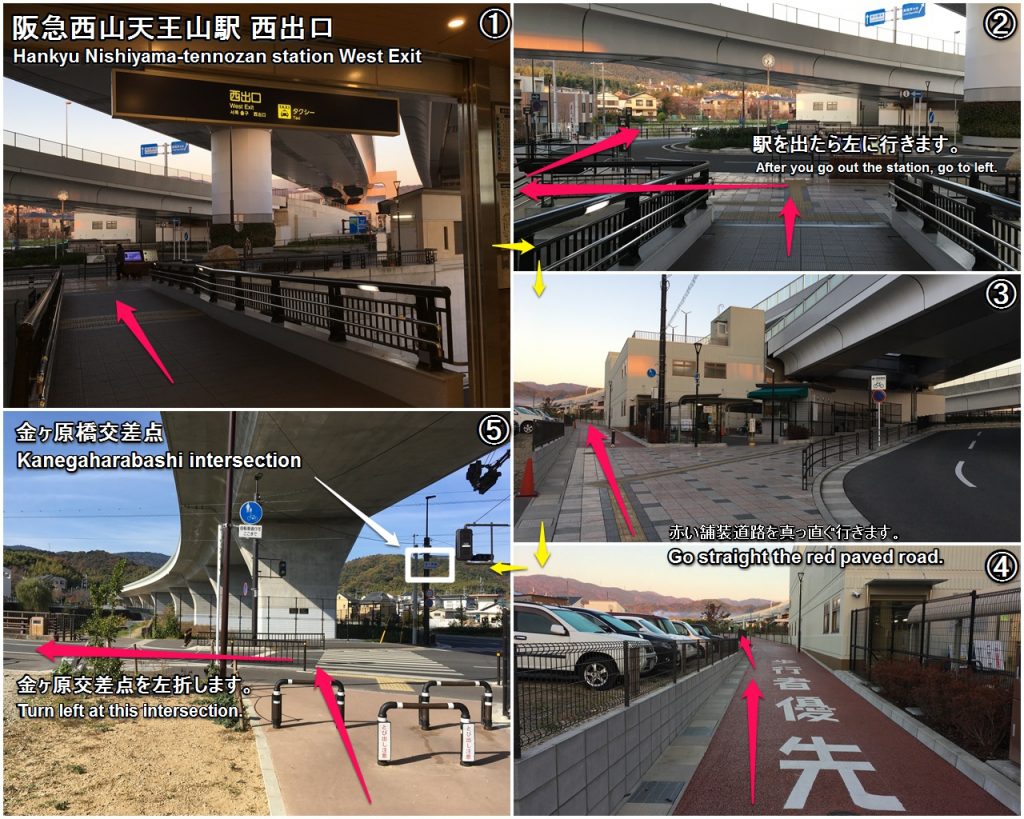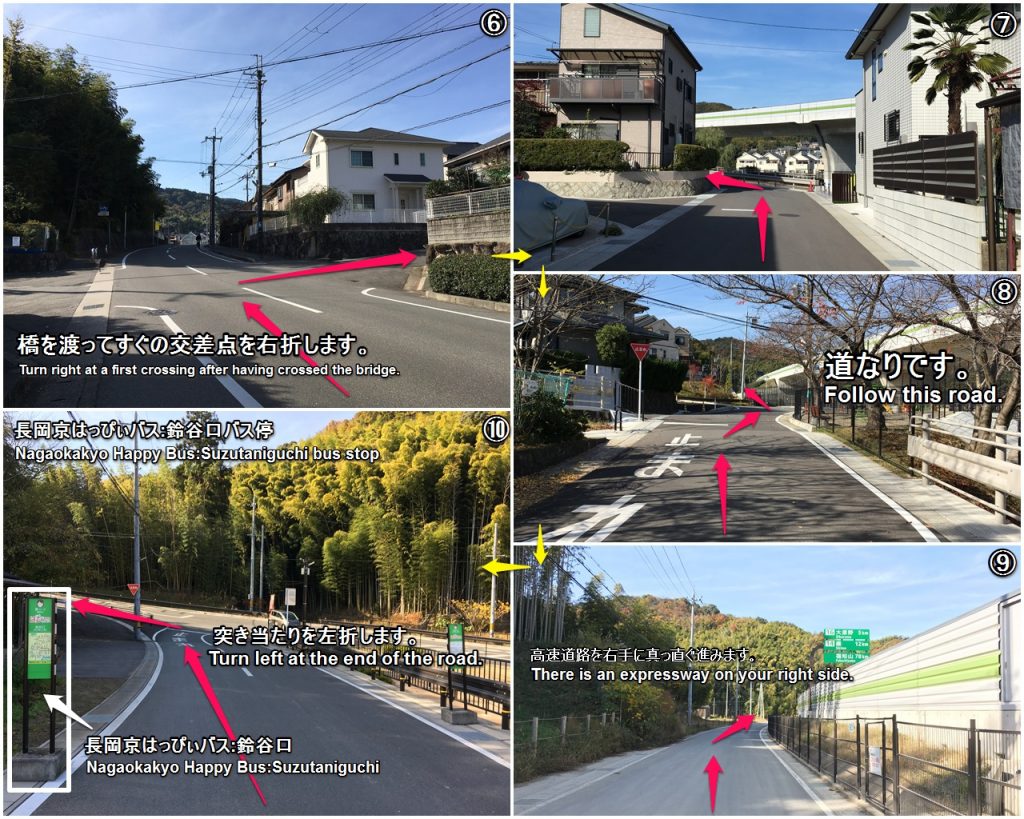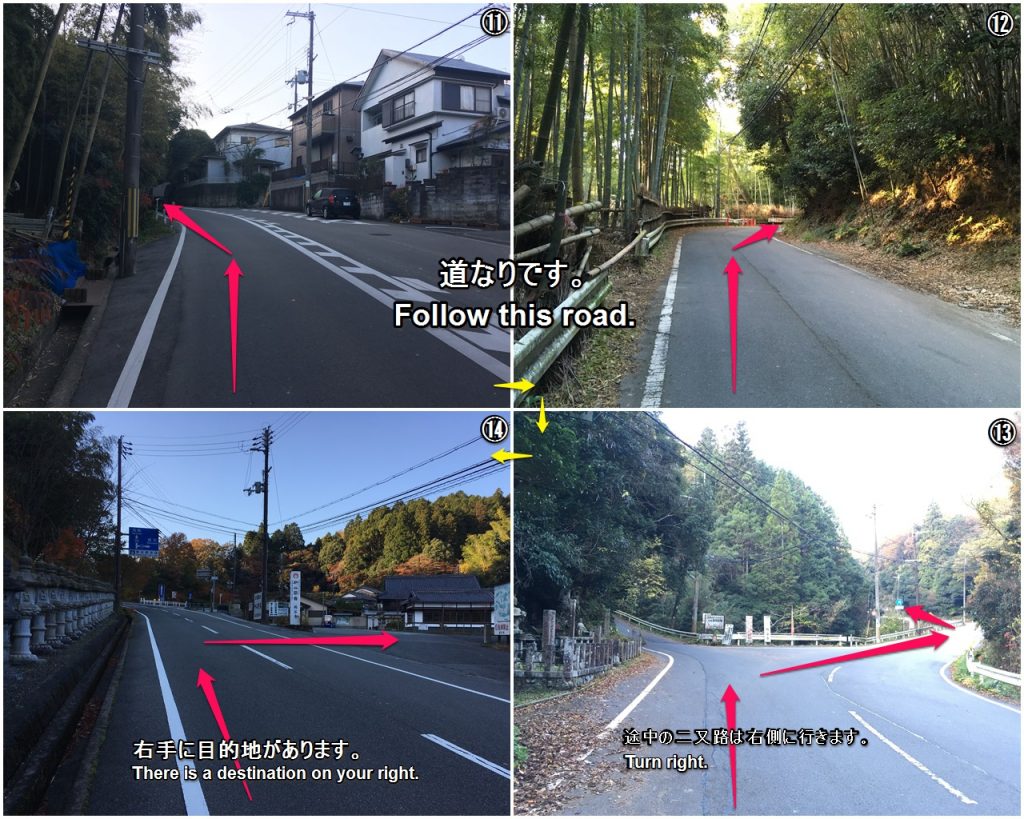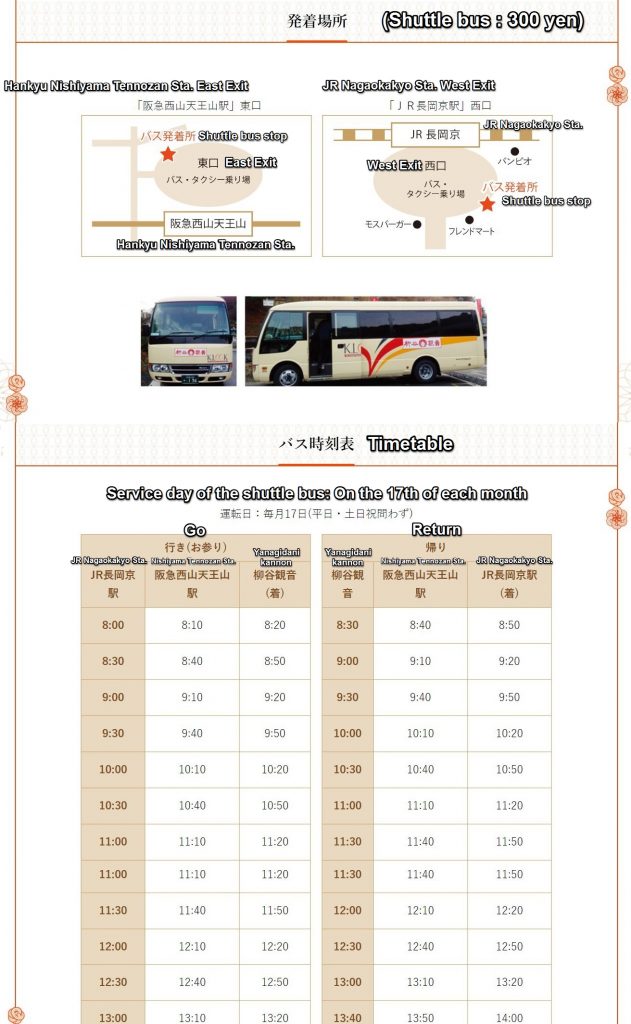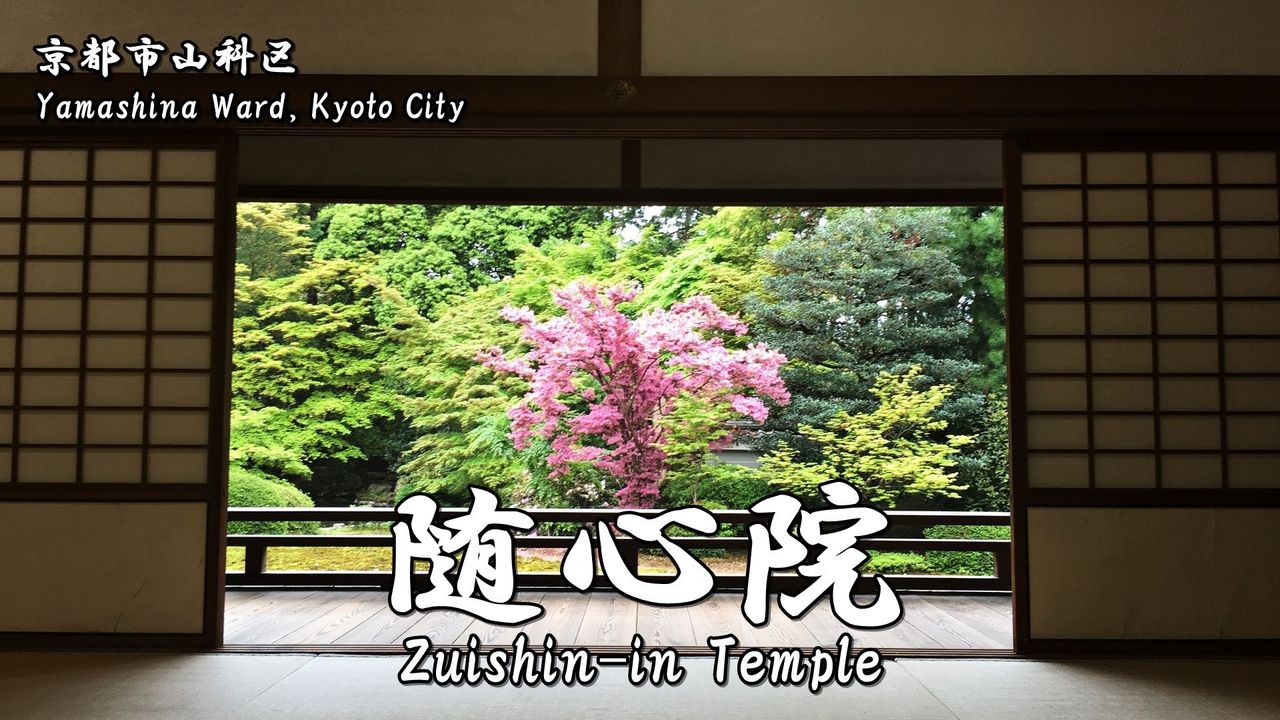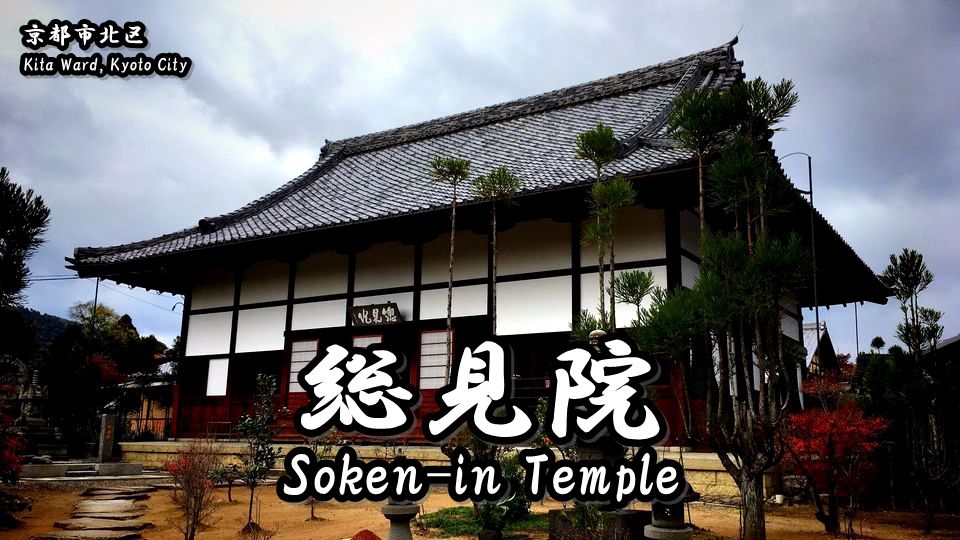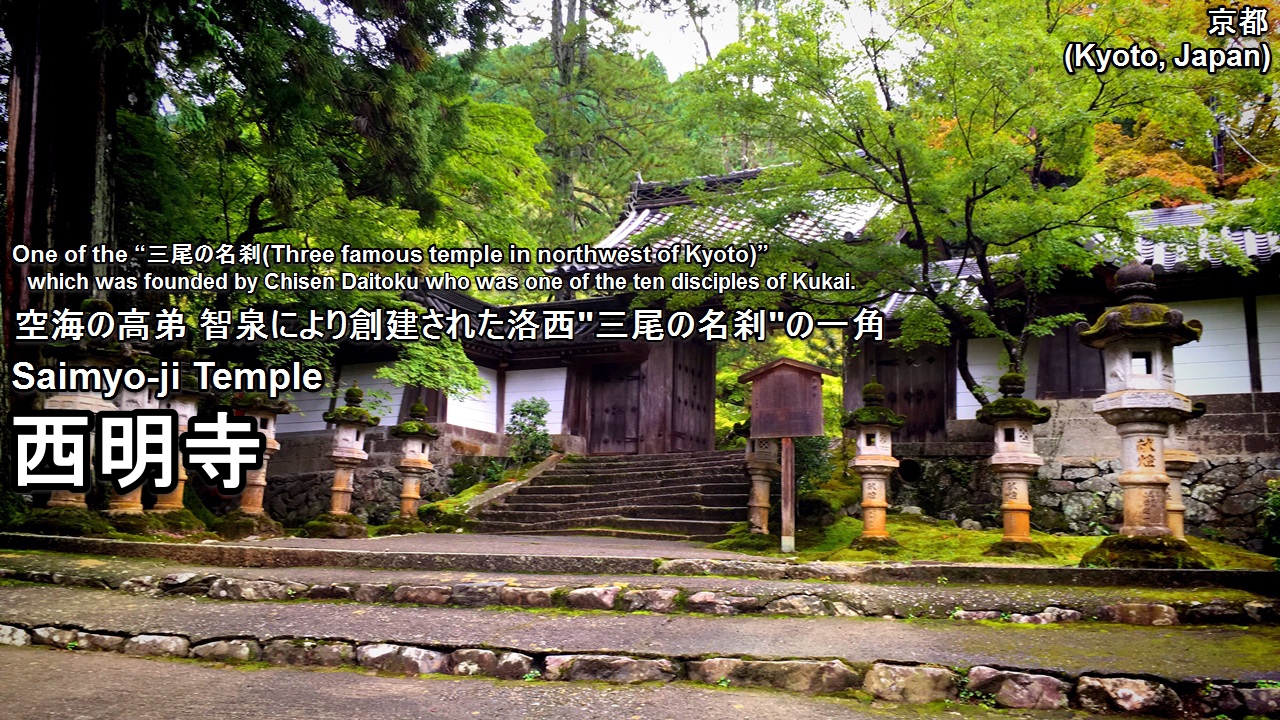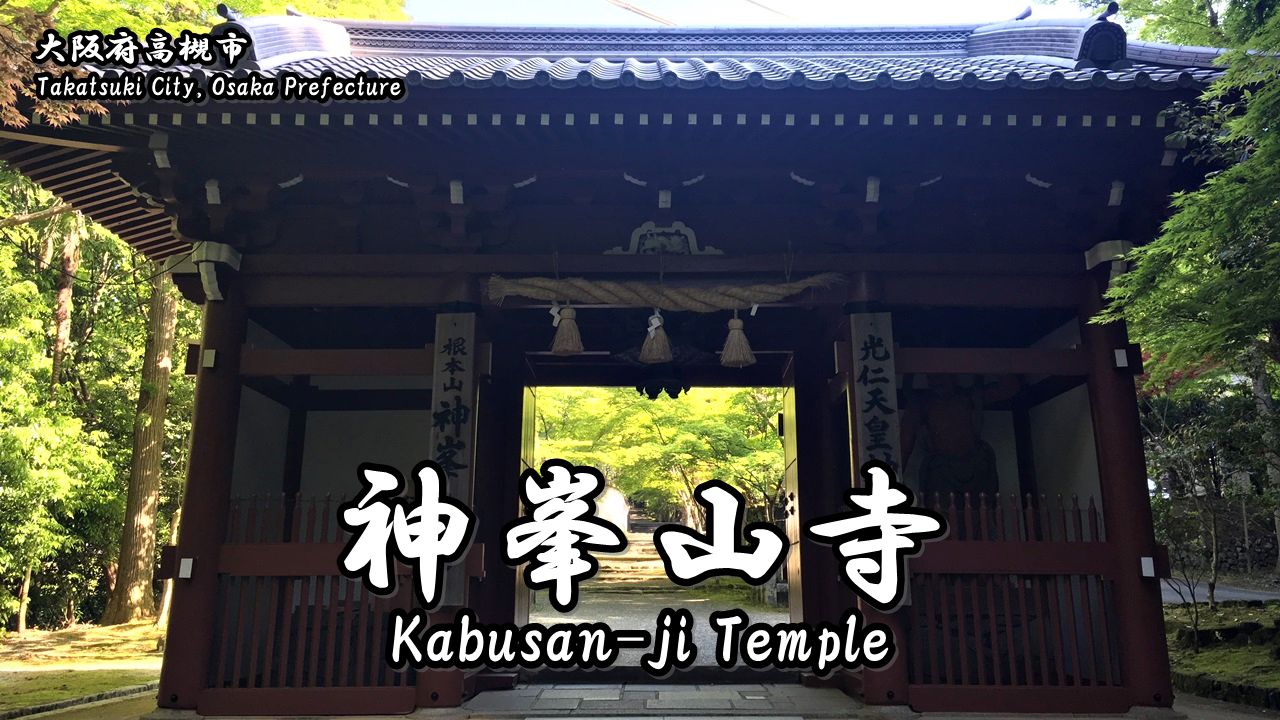Yokoku-ji Temple, located in Nagaokakyo City, Kyoto Prefecture, is a temple of the Seizan Jodo sect.
And this temple is also one of the Nishiyama-Sanzan (Komyo-ji, Yoshimine-dera, Yokoku-ji) of Kyoto.
It enshrines eleven-faced Thousand-armed Kannon Bosatsu zazo (sitting statue of the Kannon) a seated statue of the eleven-faced and one thousand-armed Kannon popular as the miracle-working Kannon-sama for eyes.
In addition, this place is called “Yanagidani” since many years ago.
So, this temple is commonly called “Yanagidani Kannon“.
It is famous for its hydrangeas and is also known as “Ajisai-dera (The Temple of Hydrangeas)“.
In addition, the scenery of colored leaves to look at from Kamishoin of this temple in autumn is very beautiful.
Contents:
- About Yanagidani Kannon
- Information for visitors
- Colored leaves of Yanagidani Kannon (Kamishoin and the garden)
- Colored leaves of Yanagidani Kannon (others)
- Highlights of Yanagidani Kannon
- Goshuin of Yanagidani Kannon
- How to get to Yanagidani Kannon
- Hotel search & reservation around Yanagidani Kannon
1.About Yanagidani Kannon
Open:9:00~17:00
Admission fee of temple:200 yen *Only period of colored leaves or hydrangeas season.
Admission fee of Kamishoin:500 yen
Address:2, Jododani, Nagaokakyo-shi, Kyoto, 617-0855, Japan
Phone Number:+81-75-956-0017
Yokoku-ji Temple, located in Nagaokakyo City, Kyoto Prefecture, is a temple of the Seizan Jodo sect.
A principal image of this temple is a wooden standing statue of the Eleven-faced Kannon.
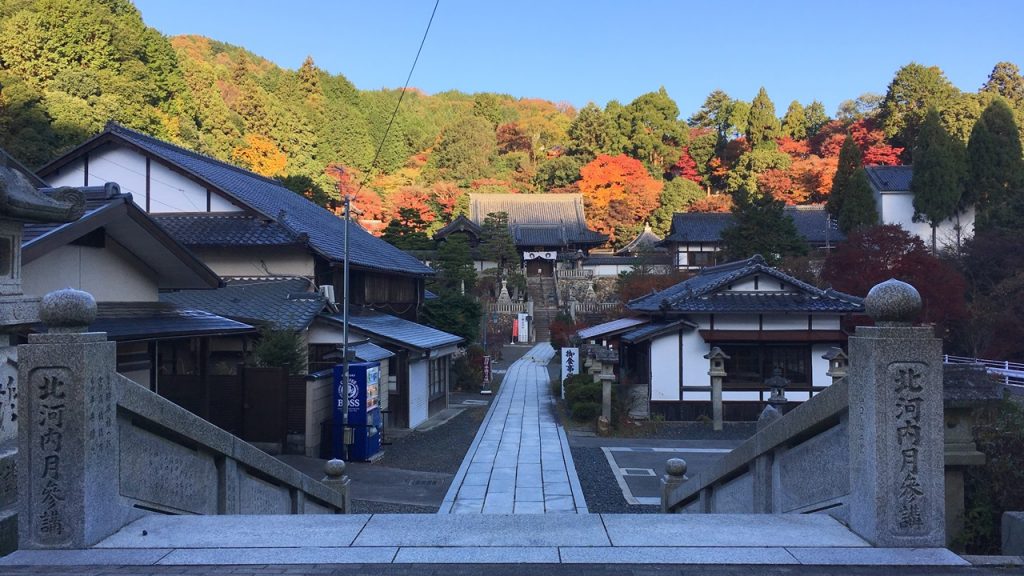
There is the corridor of hydrangeas in the precincts of this temple, and is also known as “Ajisai-dera (The Temple of Hydrangeas)“.
In addition, the scenery of colored leaves to look at from Kamishoin of this temple in autumn is very beautiful.
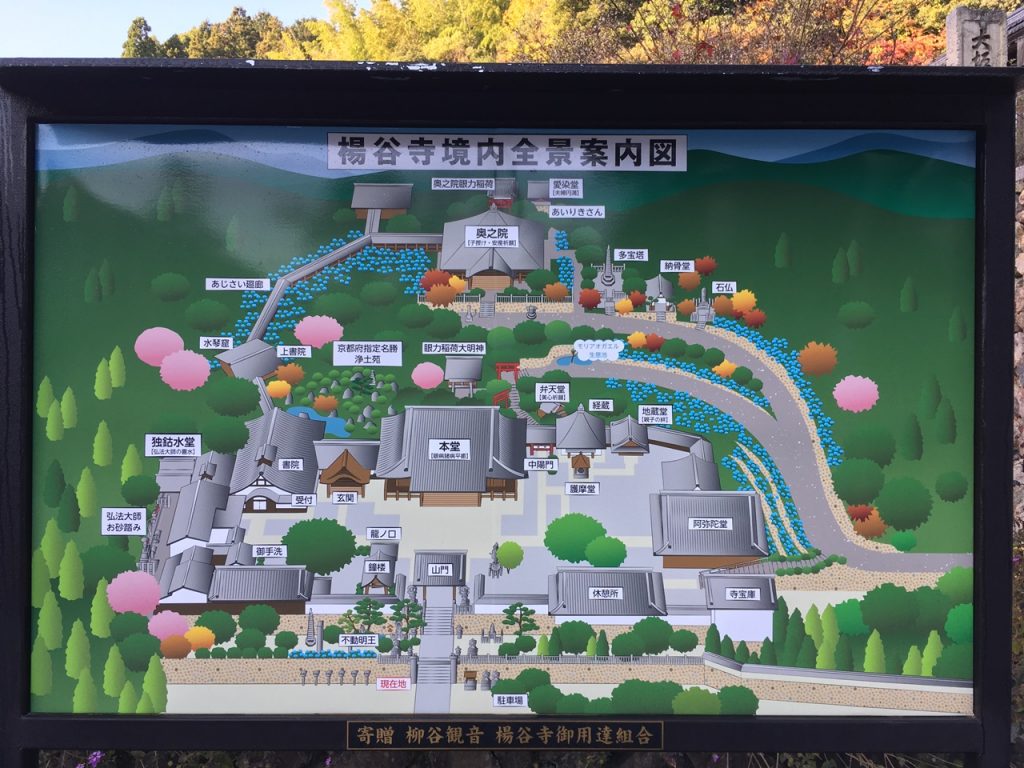
The foundation of this temple is 806 years.
It has a history of about 1,200 years.
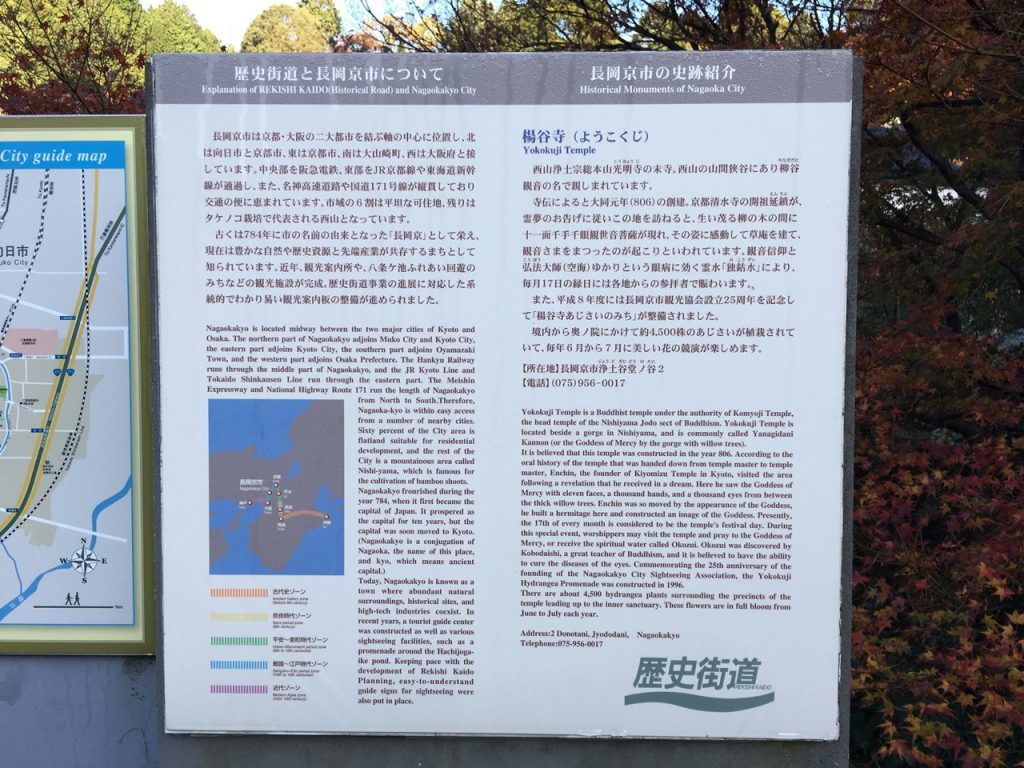
2.Information for visitors
・The period which is opened to the public of Kamishoin and service of the shuttle bus is as follows.
①On the 17th of each month (anniversary of the founder’s death)
②The period of colored leaves or hydrangeas(*Please confirm an official schedule on a homepage.)
The Kamishoin is not opened other than the above schedule.
It takes about over an hour on foot from the nearest station (Hankyu Nishiyama-tennozan Station).
I recommend to you for using of the taxi when a shuttle bus does not run.
How to get to this temple is described here.
3.Colored leaves of Yanagidani Kannon (Kamishoin and the garden)
Peak of the autumn leaves:Mid November – Early December
A best spot to see beautiful colored leaves of Yanagidani Kannon is Kamishoin.
Kamishoin was built at the beginning of the Meiji era as the building which the royalty uses.
And it was opened to the public from 2015.
The scenery of the garden to look at from Kamishoin is a superb view.
I went on November 26.
The condition of the colored leaves in that day was approximately 100%.
From this point on, let’s watch a photograph of Kamishoin’s autumn leaves.
Kamishoin is a building which was made with a 2-story total hinoki built early in the Meiji era.
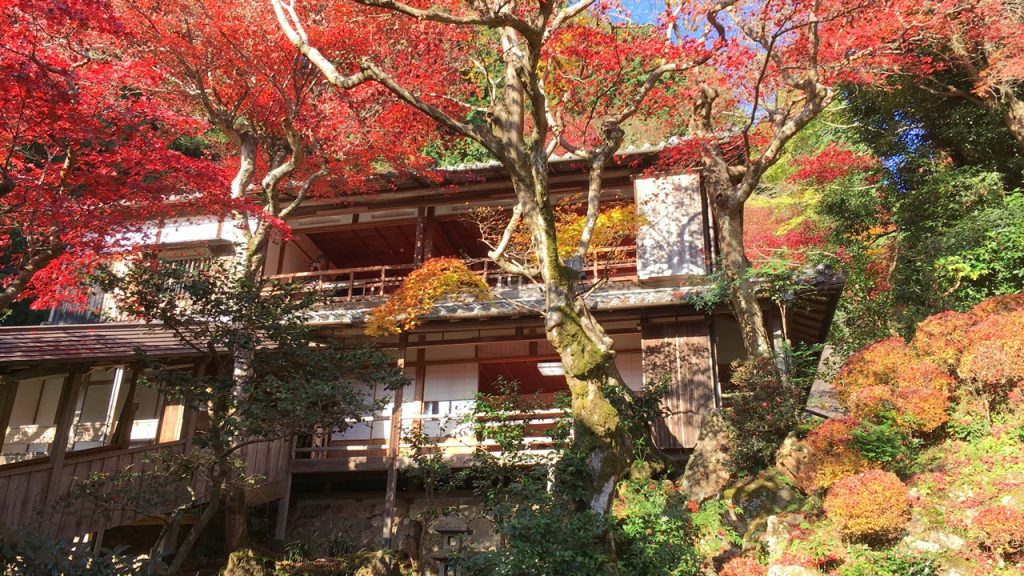
There is a Japanese garden called Jodo-en garden in front of Kamishoin.
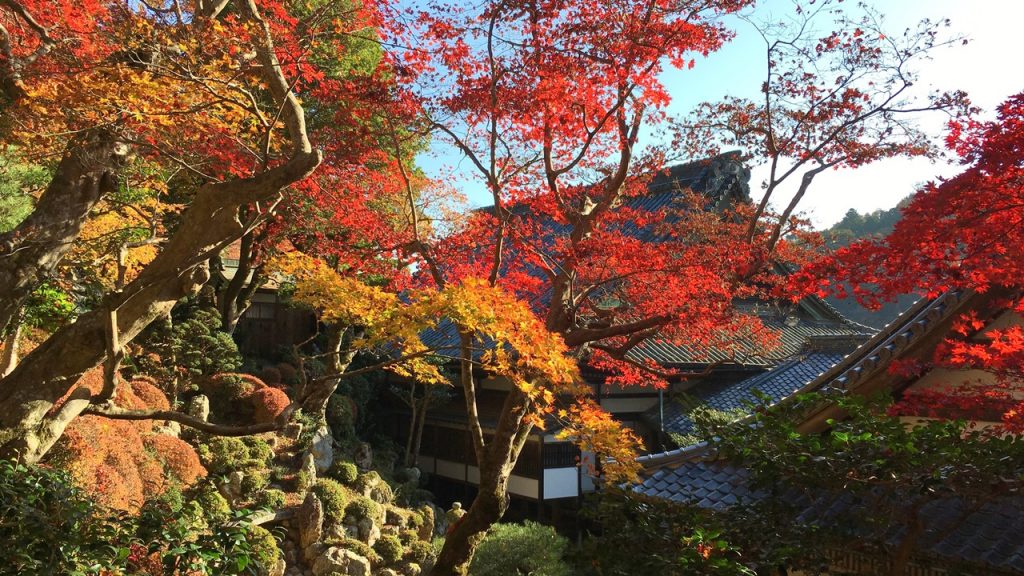
The scenery of the garden to look at from a hall of the second floor of Kamishoin is very beautiful.
In Kyoto, Ruriko-in Temple is famous for the beauty of the scenery to look at from Shoin.
However, I think that this temple’s scenery is more beautiful than Ruriko-in Temple.
By all means, everyone please try and go.
4.Colored leaves of Yanagidani Kannon (others)
Because there is this temple in the middle of the mountains of Kyoto, the whole precincts of the temple is the good spot of colored leaves.
Let’s watch a photograph of this temple’s autumn leaves.
How did you like it?
Next, let’s watch the highlight of Yanagidani Kannon!!

5.Highlights of Yanagidani Kannon
- 山門:Sanmon gate (Temple gate)
- 本堂:Hon-do (Main temple)
- 心琴窟(Shinkinkutsu: water harp cave)
- 奥之院:Okunoin
- 眼力稲荷:Ganriki-inari Shrine
- 愛染堂:Aizen-do hall
- 正一位眼力稲荷大明神:Shoichii (Senior First Rank) Ganriki-inari Daimyojin Shrine
- 淀殿弁天堂:Yodo-dono Benten-do hall
- 地蔵堂:Jizo-do hall
- 阿弥陀堂:Amida-do hall
- 独鈷水:Takko water
- 庫裡・書院:Kuri・Shoin
- おひよけさま:Ohiyoke-sama
- 護摩堂・経蔵:Goma-do hall・Kyozo
- 鐘楼:Shoro (Bell tower)
●山門:Sanmon gate (Temple gate)
This is Sanmon gate (Temple gate).
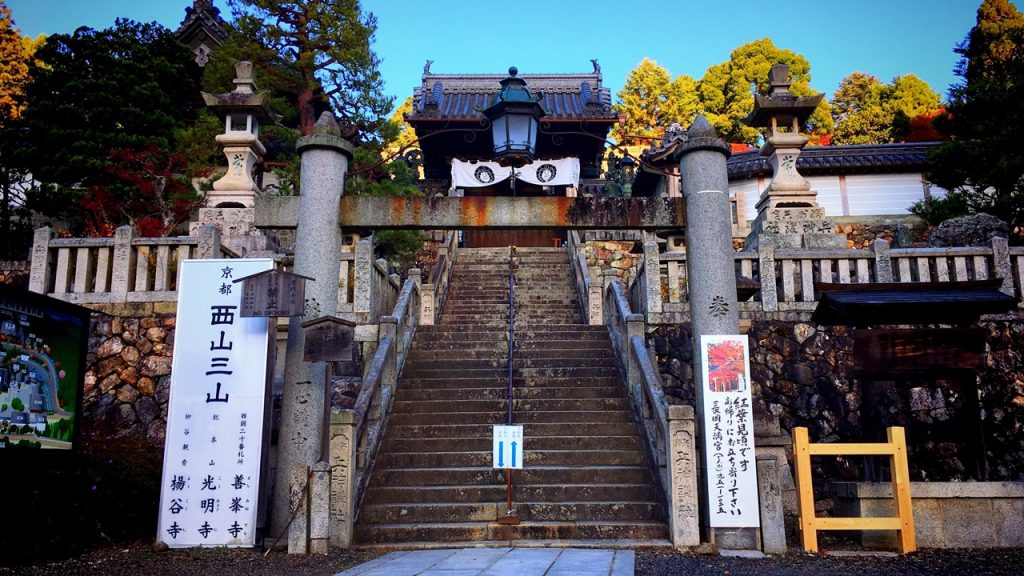
This gate is an entrance of the temple which is also used as Chokushi-mon gate (gate for Imperial Envoys).
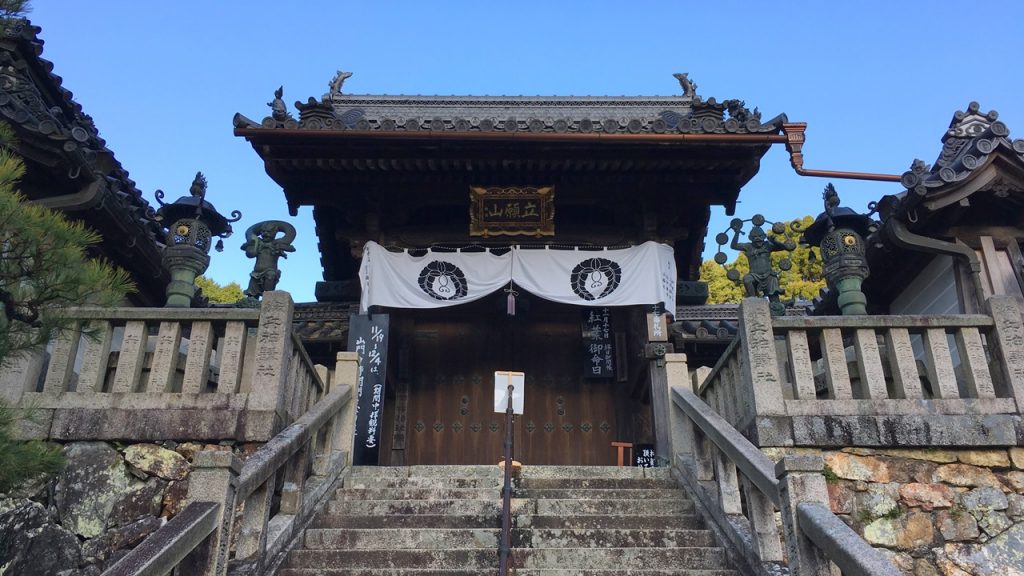
Statues of Fujin (wind god) and Raijin (thunder god) are enshrined in this gate.
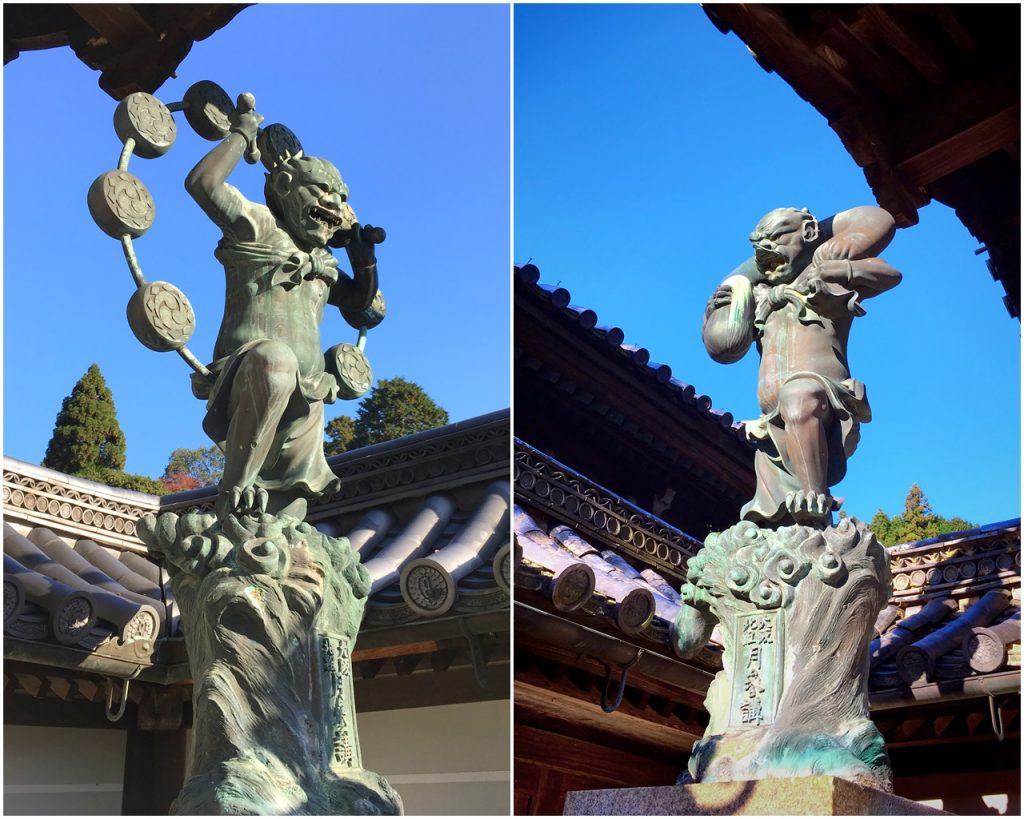
●本堂:Hon-do (Main temple)
This is Hon-do (Main temple) which was built in earlier Edo period.

Wooden standing statue of the Eleven-faced Kannon which is the principal image of this temple is enshrined in this building.
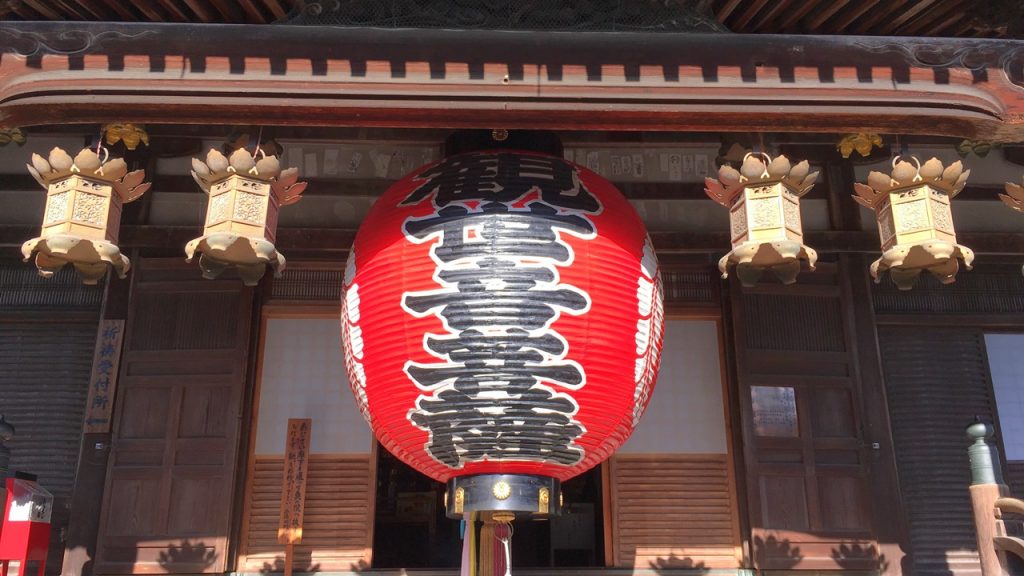
●心琴窟(Shinkinkutsu: water harp cave)
This is Shinkinkutsu (water harp cave) which is in the back of Hon-do.
Because a sound of running water echoes in a well, it is totally like the tone of the harp.

●奥之院:Okunoin
There is the corridor which was made of long stairs in the backside of Hon-do.
There is Okunoin when we go up these stairs.

This is Okunoin.
The Kannon with the divine favor of the easy delivery is enshrined in this building.
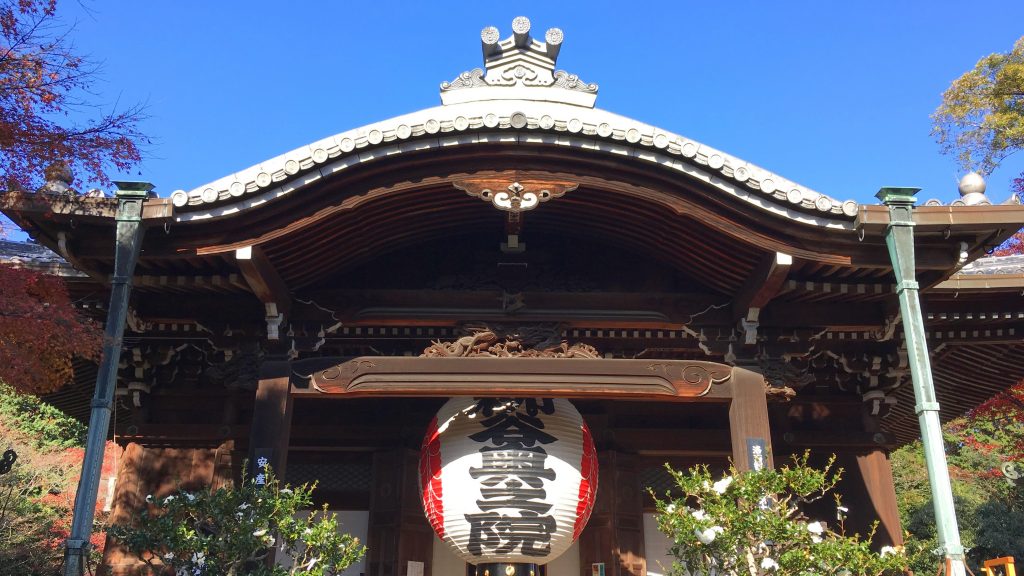
●眼力稲荷:Ganriki-inari Shrine
There is Ganriki-inari Shrine in the back of Okunoin.
This small shrine is protecting Okunoin.
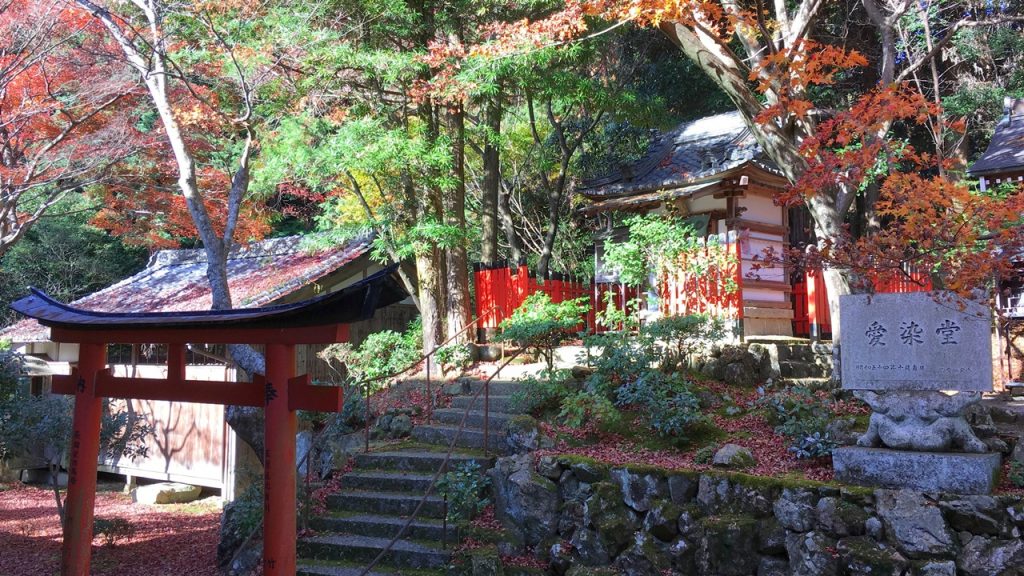
●愛染堂:Aizen-do hall
This is Aizen-do Hall.
Aizen Myoo (Ragaraja, the love god) with the divine favor of the couple harmony is enshrined in this building.
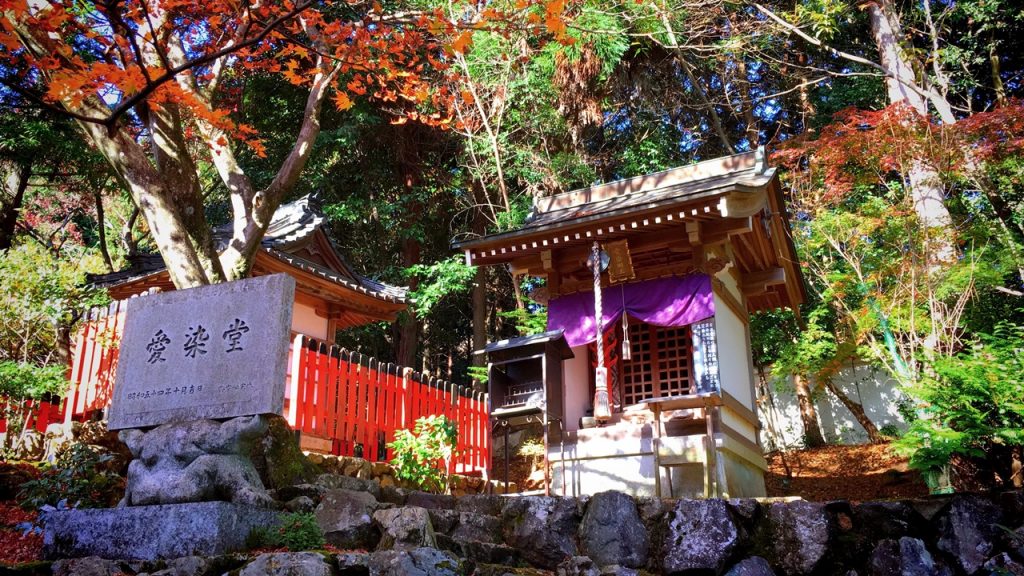
●正一位眼力稲荷大明神:Shoichii (Senior First Rank) Ganriki-inari Daimyojin Shrine
This is Shoichii (Senior First Rank) Ganriki-inari Daimyojin Shrine.
This shrine is protecting Hon-do, and has divine favor of to cut off a hesitation.

●淀殿弁天堂:Yodo-dono Benten-do hall
This is Yodo-dono Benten-do hall.
Benzaiten (Saraswati) with the divine favor of the beauty is enshrined in this building.
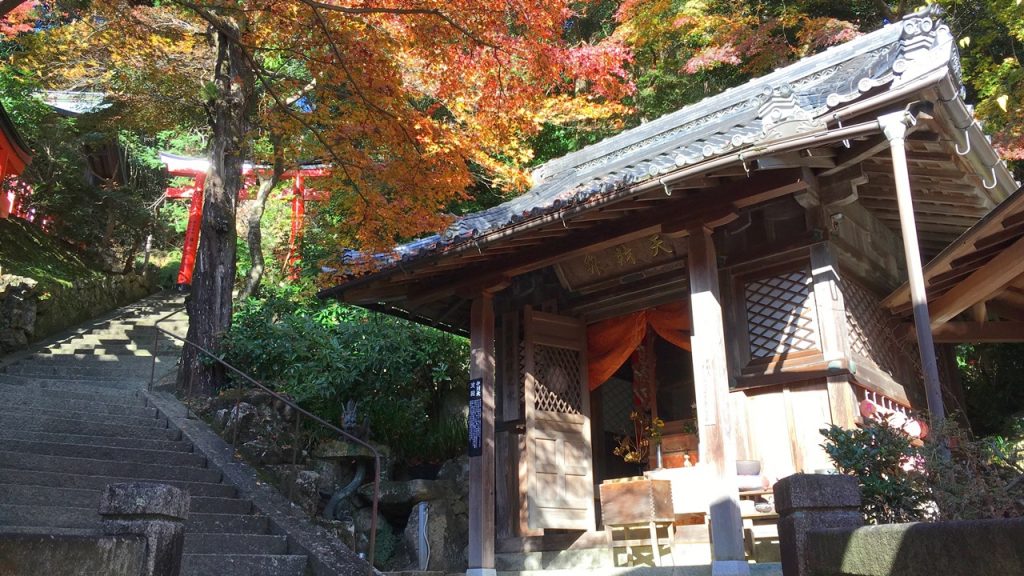
●地蔵堂:Jizo-do hall
This is Jizo-do hall.
Oyakojizo with the divine favor of the relation between parent and child is enshrined in this building.
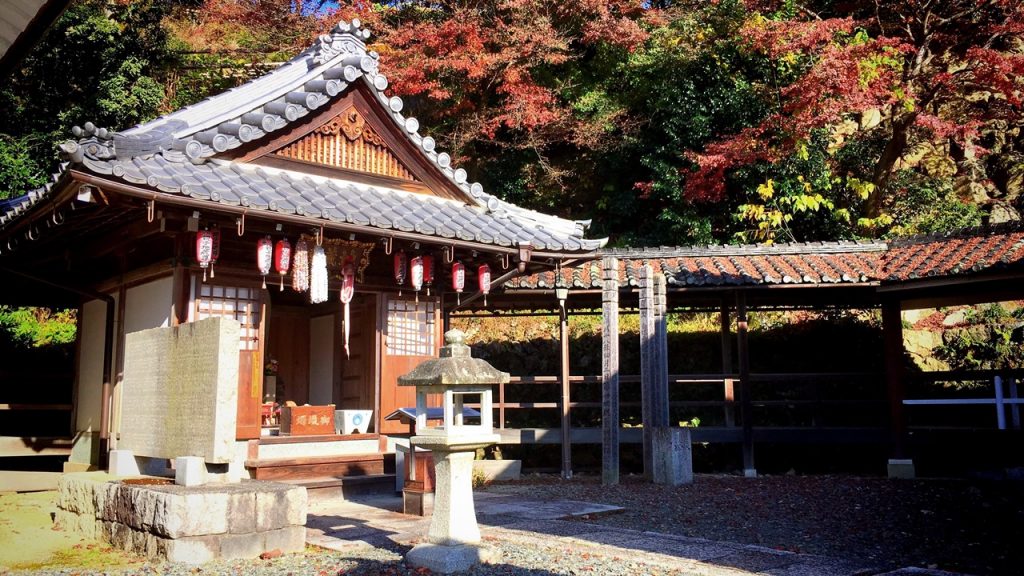
●阿弥陀堂:Amida-do hall
This is Amida-do hall which was built in the Edo period.
Statue of the Amida Nyorai and statue of the Honen Shonin are enshrined in this building.

●独鈷水:Takko water
The water springing out from this small shrine is called ‘Takko water‘.
This water has divine favor to cure the disease of eyes.
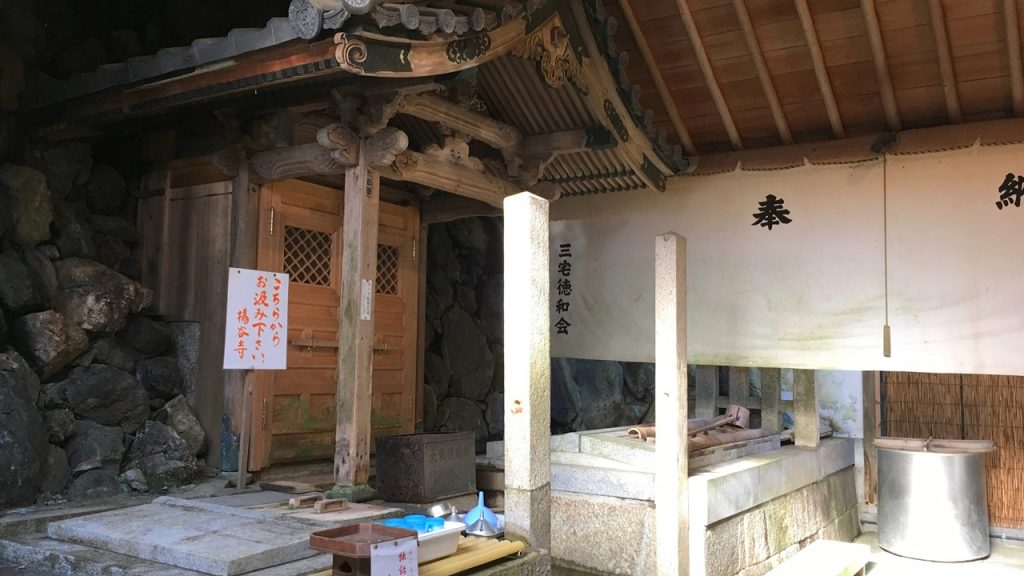
●庫裡・書院:Kuri・Shoin
●おひよけさま:Ohiyoke-sama
This building is used as a rest station now.
A guardian deity of children which has divine favor to protect from a fire called ‘Ohiyoke-sama‘ is enshrined in this building.
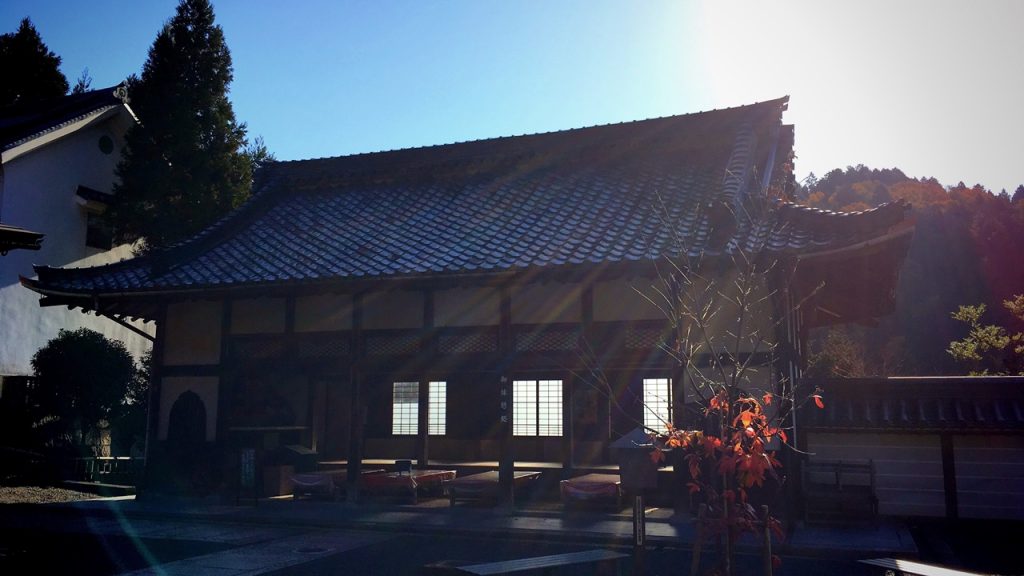
●護摩堂・経蔵:Goma-do hall・Kyozo
A building of this side is Goma-do hall, and a building behind is Kyozo.
Gomadaki (the Buddhist rite of burning wood sticks) is performed in this building on the 17th of each month (anniversary of the founder’s death).
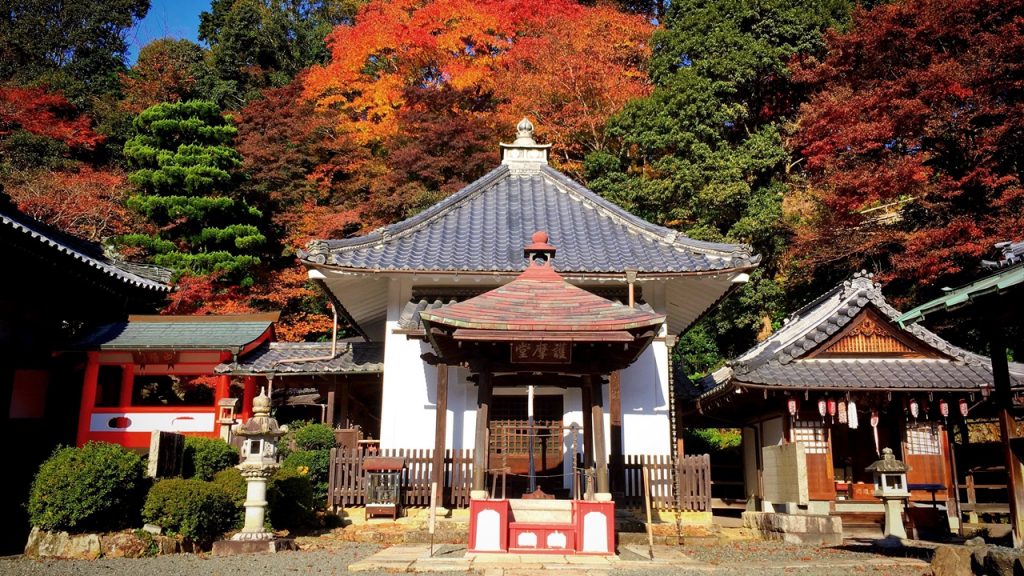
●鐘楼:Shoro (Bell tower)
6.Goshuin of Yanagidani Kannon
The right side is normal Goshuin.
The Sumigaki(The words which was written with a sumi(black ink)) is “柳谷大悲殿(Yanagidani-Daihiden)” which is another name of the principal image of Hon-do.
The left side is special Goshuin in the period of the autumn leaves. (The pressed flower of colored leaves is stuck.)
The Sumigaki(The words which was written with a sumi(black ink)) is “奥之院大悲殿(Okunoin-Daihiden)” which is another name of the principal image of Okunoin.

7.How to get to Yanagidani Kannon
The nearest station of Yanagidani Kannon is “Hankyu Nishiyama-tennozan Station”.
(We can also go by bus from “JR Nagaokakyo Station”, “Hankyu Nagaokatenjin Station”.)
A shuttle bus runs on the 17th of each month (anniversary of the founder’s death) from Hankyu Nishiyama-tennozan Station and JR Nagaokakyo Station.
Because it is very far from the nearest station and the nearest bus stop, I recommend to you using of a shuttle bus or a taxi.
The taxi fare is about 2,000 yen for one-way. (From Hankyu Nishiyama-tennozan Station to Yanagidani Kannon.)
■Route Example (From Osaka Station)
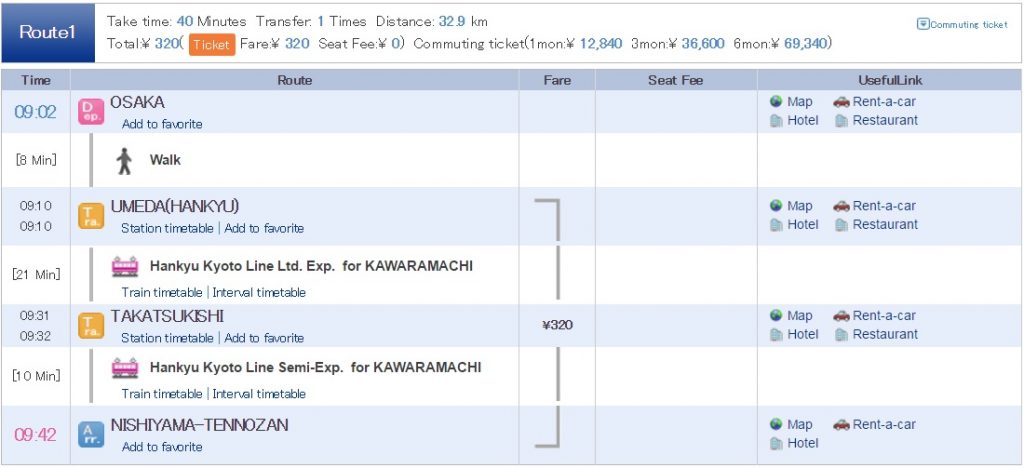
■Route Example (From Namba Station)

■Route Example (From Kyoto Station)

■From Hankyu Nishiyama-tennozan Station
The method to go to Yanagidani Kannon has 3 patterns.
①On foot
②Get on a shuttle bus (On the 17th of each month only)
③Take a taxi
②Get on a shuttle bus (On the 17th of each month only)
Boarding bus stop:Hankyu Nishiyama-tennozan Sta. East Exit Bus stop of shuttle bus
Alighting bus stop:Yanagidani Kannon
Bus fare:300 yen
Time required:About 10 min
③Take a taxi
Take a taxi from Nishiyama-tennozan Sta. East Exit taxi station.
The taxi fare is about 2,000 yen for one-way.
■From Hankyu Nagaokatenjin Station
We go by bus from Hankyu Nagaokatenjin Sta. to Yanagidani Kannon.
④Get on a Hankyu bus
[Timetable]Route No.8 or 9
Bus company:Hankyu Bus
Routes/Destination:No.8 or 9[for Oku Kaiinji(roop)]
Boarding bus stop:Hankyu Nagaokatenjin[Bus stop No.2]
Alighting bus stop:Oku Kaiinji
Bus fare:170 yen
Time required:About 10 min
・From Oku Kaiinji bus stop to Yanagidani Kannon
About 40 minutes from Oku Kaiinji bus stop to Yanagidani Kannon on foot.
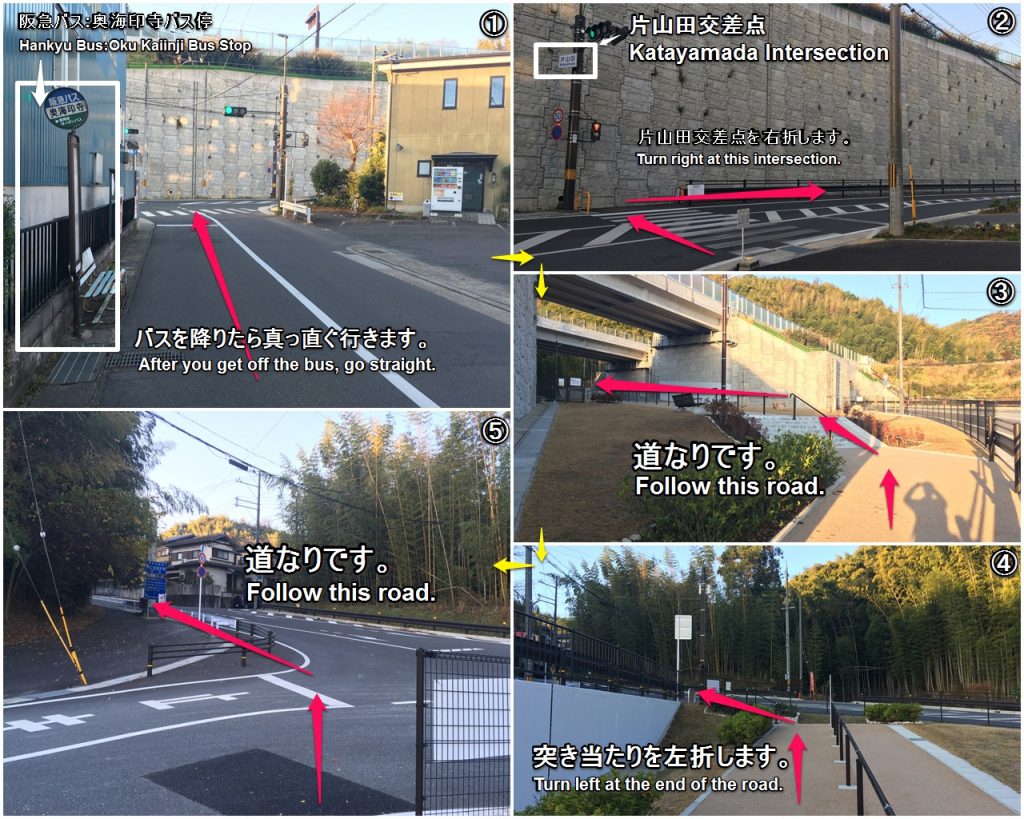
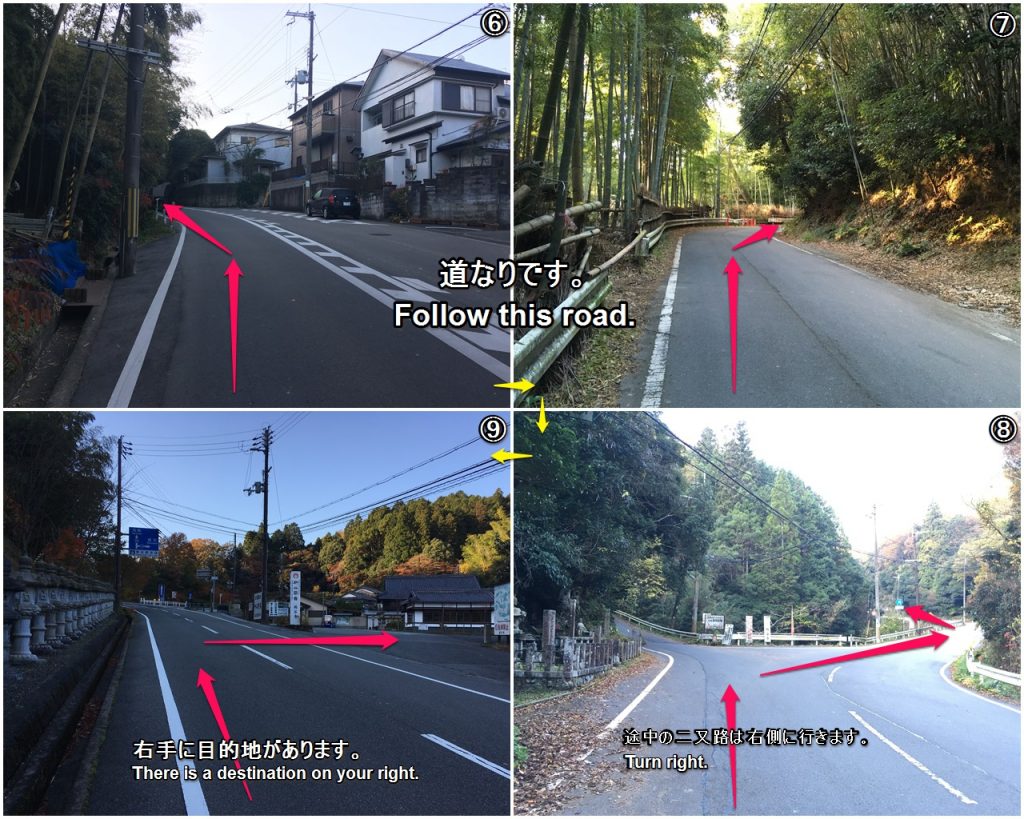
■From JR Nagaokakyo Station
The method to go to Yanagidani Kannon has 3 patterns.
⑤Get on a Hankyu bus
⑥Get on a shuttle bus (On the 17th of each month only)
⑦Get on a Nagaokakyo happy bus
⑤Get on a Hankyu bus
[Timetable]Route No.8 or 9
Bus company:Hankyu Bus
Routes/Destination:No.8 or 9[for Oku Kaiinji(loop)]
Boarding bus stop:JR Nagaokakyo[Bus stop No.2]
Alighting bus stop:Oku Kaiinji
Bus fare:170 yen
Time required:About 15 min
・From Oku Kaiinji bus stop to Yanagidani Kannon
About 40 minutes from Oku Kaiinji bus stop to Yanagidani Kannon on foot.

⑥Get on a shuttle bus (On the 17th of each month only)
Boarding bus stop:JR Nagaokakyo Sta. West Exit Bus stop of shuttle bus
Alighting bus stop:Yanagidani Kannon
Bus fare:300 yen
Time required:About 20 min
⑦Get on a Nagaokakyo happy bus
[Timetable]West course (There is no operation on Sunday and Saturday.)
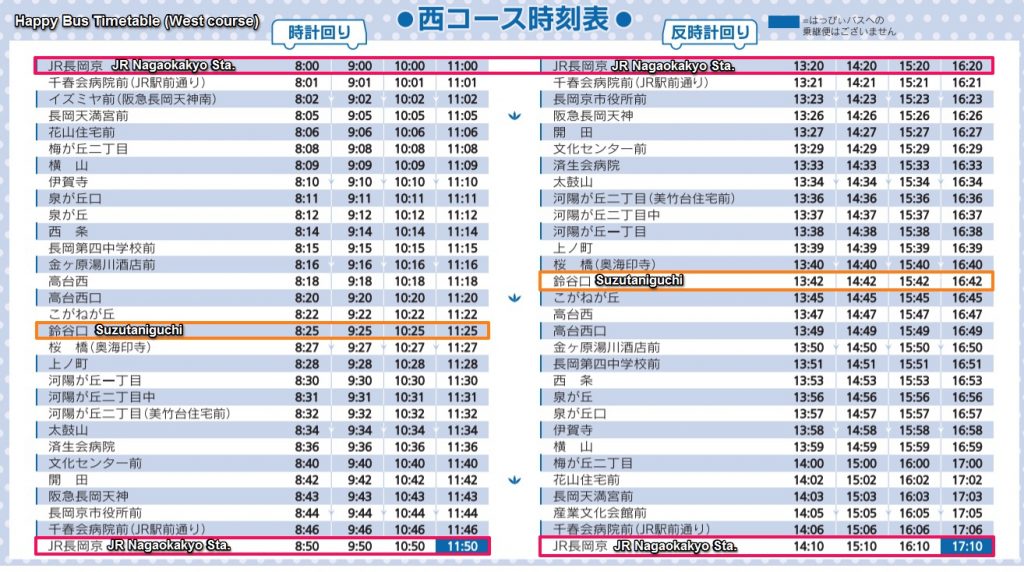
Bus company:Nagaokakyo Happy Bus
Routes/Destination:West cource [loop line]
Boarding bus stop:JR Nagaokakyo Sta.
Alighting bus stop:Suzutaniguchi
Bus fare:150 yen
Time required:About 25 min
・From Suzutaniguchi bus stop to Yanagidani Kannon
About 30 minutes from Suzutaniguchi bus stop to Yanagidani Kannon on foot.
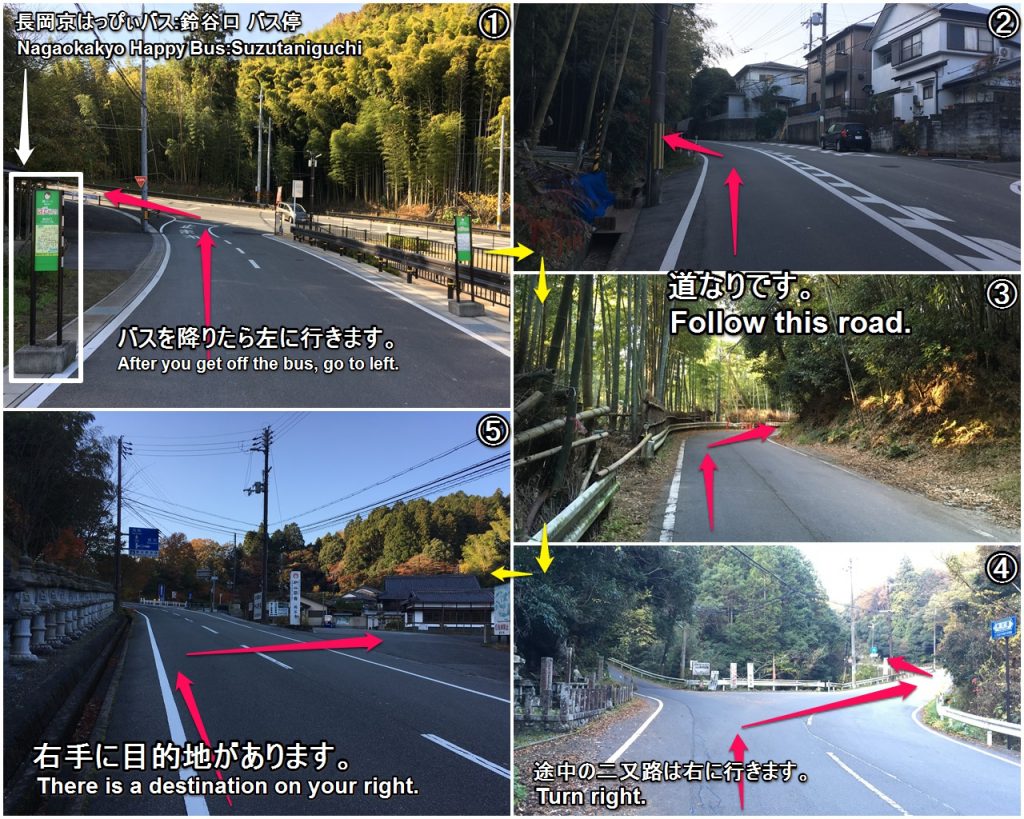
■When you take a taxi
From Hankyu Nishiyama-Tennozan Station:1,730 yen ~ 2,160 yen (about 10 minutes)
From JR Nagaoka-kyo Station:2,210 yen ~ 2,640 yen (about 15 minutes)
From JR Kyoto Station:5,650 yen ~ 6,960 yen (about 30 minutes)
・Let’s show a taxi driver the following phrase.

・If you want to call a taxi, let’s show the following phrase.

[Phone number of taxi dispatch : Around the Nishiyama-Tennozan Station]*Japanese text only.
[Phone number of taxi dispatch : Around the Kyoto Station]*Japanese text only.
8.Hotel search & reservation around Yanagidani Kannon
How did you like it?
Please try to go to this place.
Have a nice trip! XD
<Let’s search the sightseeing information of Kansai in Japan on ‘Japan’s Travel Manual‘!!>
<This site introduces the easiest way to get Japanese (Kansai) sightseeing spots to you.>

